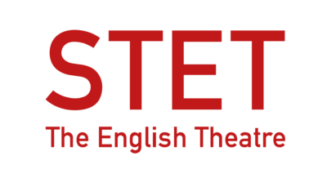6 things you should know about theatre and disabilities
In recent years, The United Kingdom has made leaps of progression for increasing diversity in theatre, both on stage and for their audiences. What can the Dutch theatre world learn from the UK? On Monday 1 November, we proposed this question to a panel of Dutch and British experts during our symposium STET NO LIMITS: A Call to Action! Here are the six most important things we learned.
1. Performers with disabilities will enrich the cultural field
Let’s start with the most obvious, yet one of the most important points. Stories about and by people with disabilities need to be told. First of all, everyone should be able to see themselves on stage and in the audience. Second of all, all of us need to learn new stories and new perspectives.
2. Making theatre more accessible for people with disabilities is possible
In The Netherlands, the first steps are made but there is still a lot we can learn from our British neighbours. With about 40 years of work (in progress!), the UK offers a variety of disability-led companies, such as Birds of Paradise and BareFace Collective. Also, theatres across the country offer shows that are accessible to disabled audience members, with sign language, relaxed performances and audio description. As a matter of policy, British theatres more often include shows accessible for all.
3. Performers with disabilities are PERFORMERS
In the Netherlands, arts and culture for people with disabilities are mostly accessible as means of recreation or creative therapy, which creates this idea of performers with a disability being “just sweet amateurs”. Aspiring professional theatre makers with disabilities are being forced to adapt to existing theatre schools, made for able-bodied performers, causing for less then 20 professional actors with disabilities in The Netherlands. Therefore, we should battle the mentality that performers with disabilities are just sweet amateurs and remove barriers in institutions.
4. We should apply the Social Model of Disability
But how to get rid of these barriers? The Social Model of Disability can help us recognise and remove barriers.. This model entails that people are disabled by barriers in society and not by their impairment or difference. For example, a wheelchair user who visits the theatre is disabled by lack of an elevator rather than their difference.
5. We should see more stories about and just with people with disabilities
So, we should make room for actors with disabilities to tell their own stories on stage. However, a blind actress has more stories to tell than the ones about her visual impairment. She should just as well be able to play Lady Macbeth.
6. Just do it!
Programme, teach, hire. You don’t need to do it perfect or do everything at once, but just start somewhere!
At STET, we are working hard on making our shows more accessible. Click here to read more about what we do.
Next up: Jogging with sign language interpreter (NGT), 1 April
A big thanks to Lucy Ferguson, Jonny Cotsen and Gareth Clark, Robert Softley Gale, Miss Jacqui, Paul Röttger, Paloma Oakenfold and Zara Jayne Arnold, Willemijn Haasken, Vincent Bendervoet & Carolien van Heijst, Claudia Marinelli, Marianne Dijkshoorn and all visitors and livestream audience!

